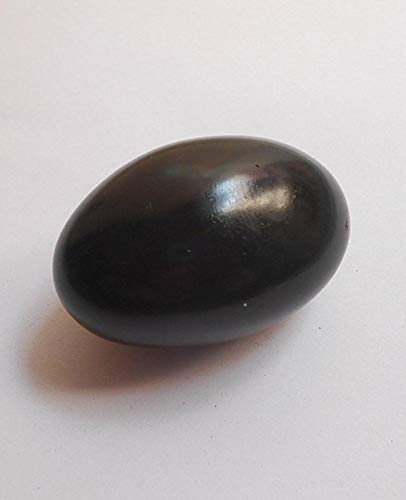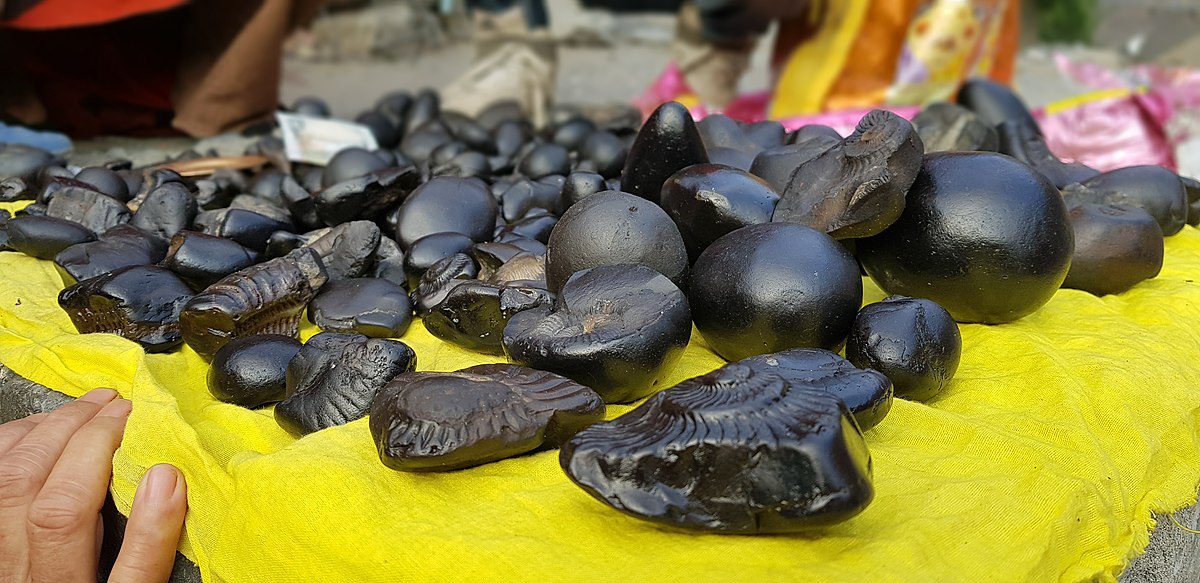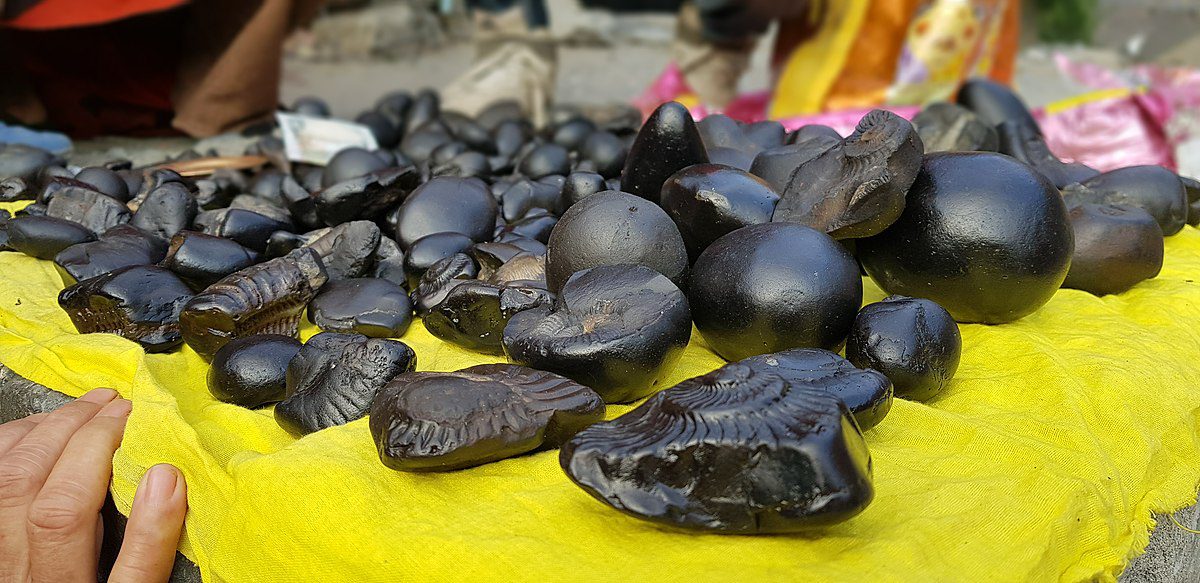Wavs
Shaligram Stone

Origins and Mythological Background
The Shaligram stone is a unique fossil found in the Gandaki River of Nepal, specifically in the Kali Gandaki River, which flows through the Mustang region. These stones are naturally occurring ammonite fossils, believed to have originated from the remains of ancient sea creatures millions of years ago.
According to Hindu mythology, the Shaligram stone is considered sacred because it is believed to be a direct manifestation of Lord Vishnu. Legend has it that the Shaligram stones were initially discovered by the sage Narada Muni, who performed intense penance to please Lord Vishnu. Pleased with Narada’s devotion, Vishnu appeared before him in the form of these ammonite fossils, which came to be revered as representations of the deity himself.
Physical Characteristics and Types
Shaligram stones vary in appearance and markings, influenced by their geological formation and mineral composition. Typically, they are black or dark brown in color, often with spiral-shaped ridges and natural patterns resembling the Sudarshana Chakra (the divine discus weapon of Vishnu). The size of Shaligram stones can range from small palm-sized specimens to larger, more intricate formations.
Each Shaligram stone is unique, and their shapes and markings are believed to correspond to different manifestations (Avatars) of Lord Vishnu. The most revered Shaligram stones are those with specific markings or symbols, such as the presence of chakras (discs), lines resembling lotus petals, or natural impressions resembling weapons held by Vishnu in his various incarnations.
Symbolism and Spiritual Significance
The Shaligram stone holds deep symbolism and spiritual significance in Hinduism, particularly within the Vaishnavite sect:
-
Representation of Vishnu: The Shaligram stone is considered a divine manifestation of Lord Vishnu, revered as a sacred object of worship in Hindu temples and households.
-
Eternal Presence: It is believed that the presence of Vishnu resides within the Shaligram stone, making it a potent symbol of divine protection, auspiciousness, and blessings.
-
Purification and Sanctification: Shaligram stones are often used in rituals and ceremonies to sanctify spaces, purify offerings, and invoke the presence of Vishnu during worship (puja).
-
Spiritual Evolution: Devotees believe that owning and worshipping a Shaligram stone brings spiritual growth, protection from negative influences, and facilitates the attainment of moksha (liberation) from the cycle of birth and death.


Benefits of Shaligram Stone:
-
Divine Blessings: The Shaligram stone is considered a manifestation of Lord Vishnu, embodying his divine presence and blessings. Worshipping it is believed to invoke Vishnu’s grace and protection.
-
Spiritual Growth: Owning and worshipping a Shaligram stone is thought to aid in spiritual evolution and enlightenment. It is believed to facilitate deeper meditation, enhance spiritual awareness, and foster a sense of inner peace and harmony.
-
Protection: The Shaligram stone is believed to offer protection from negative energies, malefic influences, and obstacles in life. It is considered a potent talisman for safeguarding the devotee’s well-being and spiritual journey.
-
Removal of Sins: It is believed that worshipping a Shaligram stone can help purify one’s karma (actions) and cleanse one’s soul of past sins. Devotees seek its blessings to attain spiritual purification and liberation (moksha).
-
Health Benefits: Some believe that the Shaligram stone possesses healing properties, both physical and spiritual. It is thought to promote overall well-being, alleviate ailments, and restore balance to the body and mind.
-
Auspiciousness: Keeping a Shaligram stone in the home or wearing it as a pendant is considered auspicious. It is believed to attract positive energies, prosperity, and happiness into one’s life and surroundings.
-
Astrological Remedies: In Vedic astrology, specific types of Shaligram stones are recommended as remedies to appease planetary influences (grahas) and mitigate astrological doshas (imbalances).
-
Facilitation of Rituals: Shaligram stones are integral to Hindu rituals and ceremonies. They are used to sanctify spaces, consecrate offerings, and invoke the presence of Lord Vishnu during religious observances and festivals.
-
Cultural and Spiritual Connection: For devotees, possessing a Shaligram stone symbolizes a deep spiritual connection with Hindu traditions and the worship of Lord Vishnu. It fosters devotion, reverence, and a sense of spiritual fulfillment.
-
Heritage and Tradition: The Shaligram stone is part of India’s rich cultural heritage and religious traditions. Its reverence spans generations, contributing to the preservation and continuity of ancient Hindu practices and beliefs.

Importance of Shaligram stone:
Manifestation of Lord Vishnu
The Shaligram stone is revered as a direct manifestation of Lord Vishnu. According to Hindu mythology, it is believed that the Shaligram stone embodies the divine presence of Vishnu himself. This association makes the stone a sacred object of worship and devotion among Vaishnavites.
Symbol of Divine Protection
Worshipping the Shaligram stone is believed to invoke the blessings and divine protection of Lord Vishnu. Devotees believe that keeping the Shaligram stone in their homes or wearing it as a pendant can ward off negative energies, evil influences, and obstacles in life. It is considered a powerful talisman for spiritual and physical protection.
Spiritual Enlightenment and Growth
Possessing and worshipping the Shaligram stone is thought to facilitate spiritual growth and enlightenment. It is believed to deepen one’s meditation practice, enhance spiritual awareness, and foster a closer connection with Vishnu. The stone is often used as a focal point during meditation to aid in concentration and contemplation of divine qualities.
Purification of Karma
In Hindu belief, the Shaligram stone is associated with the purification of karma (actions). Devotees seek its blessings to cleanse themselves of past sins and negative karmic impressions. By worshipping the Shaligram stone with devotion and sincerity, one aims to attain spiritual purification and progress towards liberation (moksha).
Auspiciousness and Prosperity
The presence of a Shaligram stone is considered highly auspicious in Hindu households and temples. It is believed to attract positive energies, prosperity, and abundance into one’s life and surroundings. Keeping the Shaligram stone in the home is thought to create a harmonious and spiritually charged environment.
Astrological Significance
In Vedic astrology, specific types of Shaligram stones are recommended as remedies to mitigate the adverse effects of planetary influences (grahas) and astrological doshas (imbalances). These stones are believed to pacify planetary positions and promote harmony in one’s life.
Integral to Rituals and Ceremonies
Shaligram stones play a pivotal role in Hindu rituals and ceremonies dedicated to Lord Vishnu. They are used to sanctify spaces, consecrate offerings, and invoke Vishnu’s presence during worship (puja), festivals, and religious observances. The stones are adorned with flowers, incense, and sacred water (abhishekam) as acts of reverence and devotion.
Cultural Heritage and Tradition
The reverence for Shaligram stones is deeply ingrained in India’s cultural heritage and religious traditions. They have been venerated for centuries, passed down through generations as symbols of faith and spiritual devotion. The stones represent continuity in ancient Hindu practices and beliefs, preserving the rich tapestry of religious heritage.
Global Recognition and Appeal
Beyond India, the Shaligram stone has gained recognition and admiration among global communities interested in Hindu spirituality and philosophy. Its unique geological origin and spiritual symbolism attract spiritual seekers, scholars, and enthusiasts worldwide.
Personal Devotion and Connection
For devotees of Vishnu, owning a Shaligram stone signifies a personal connection with the divine. It symbolizes devotion, faith, and a commitment to spiritual principles upheld by Lord Vishnu. The stone serves as a tangible reminder of Vishnu’s omnipresence and benevolence in the devotee’s life.
